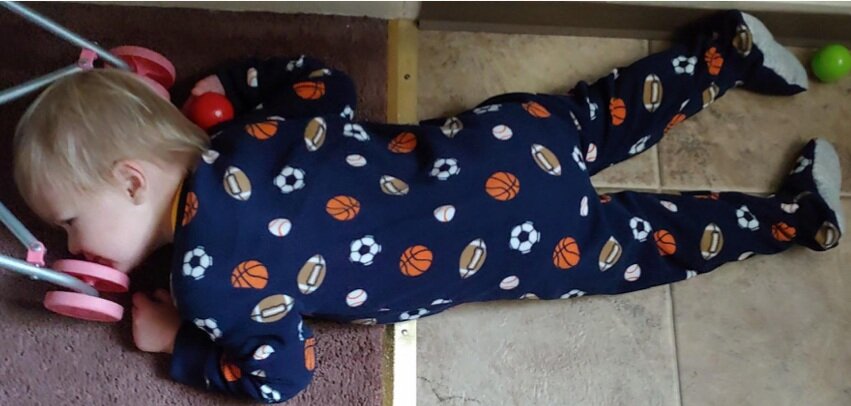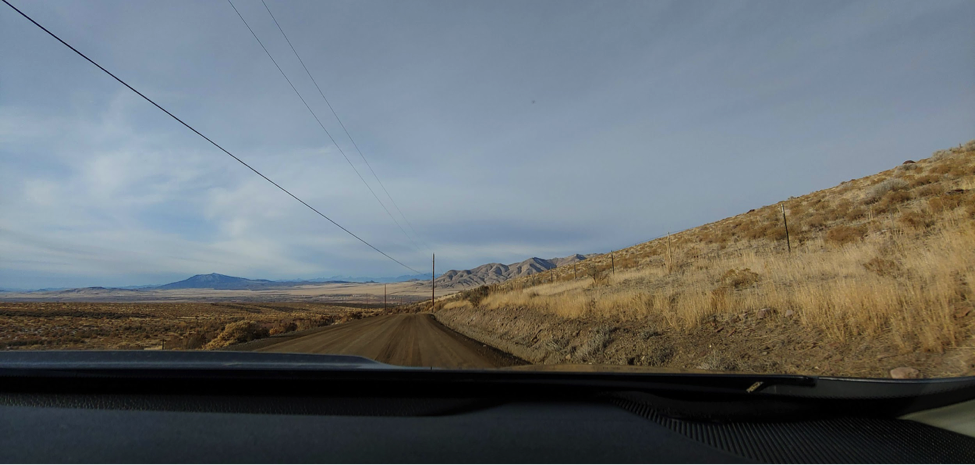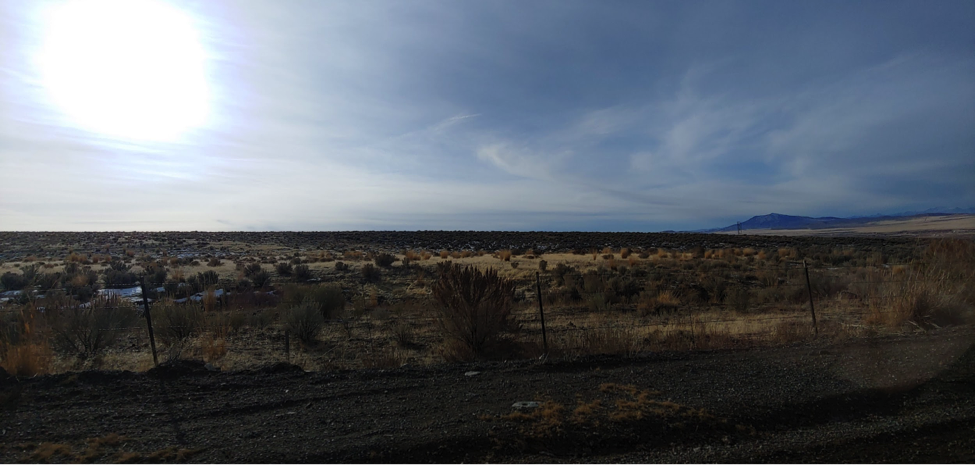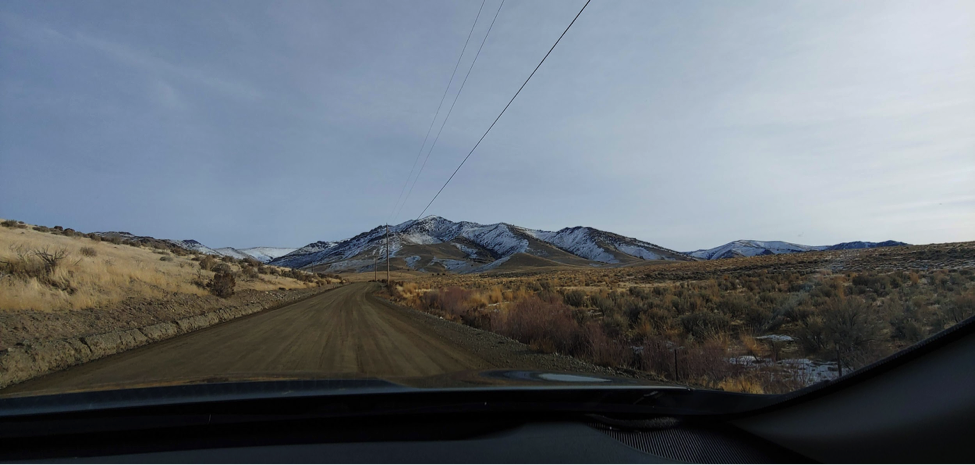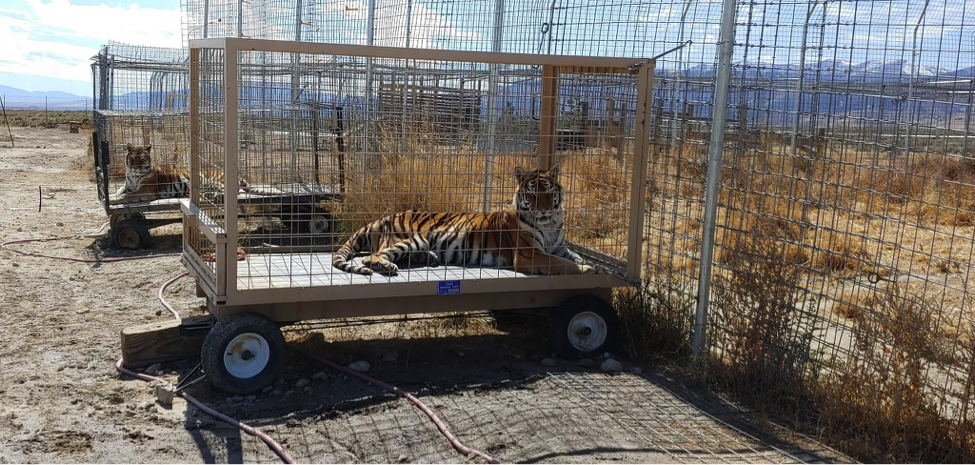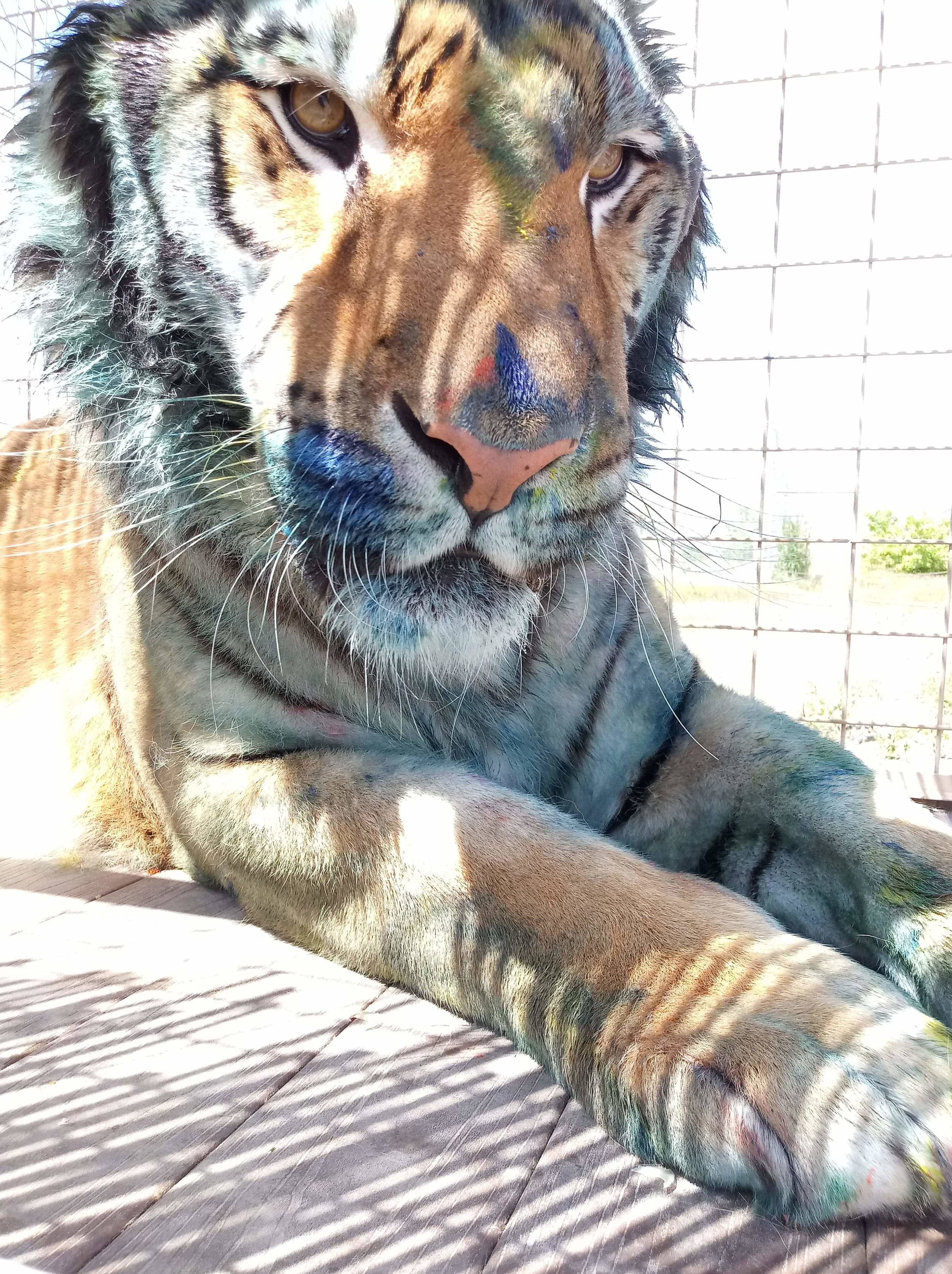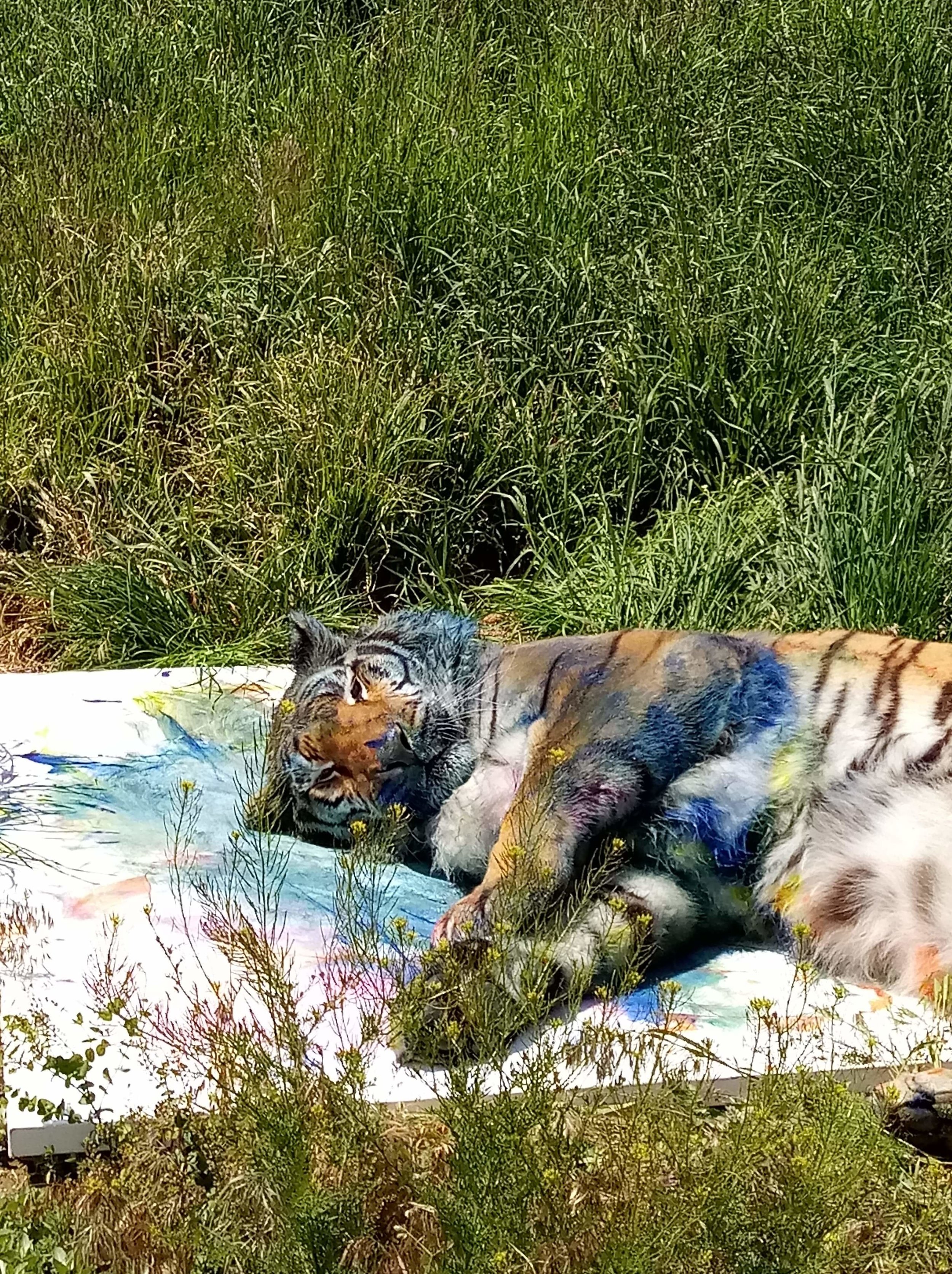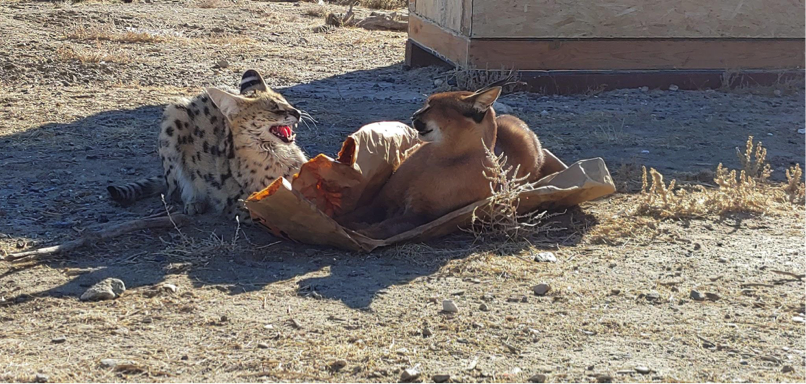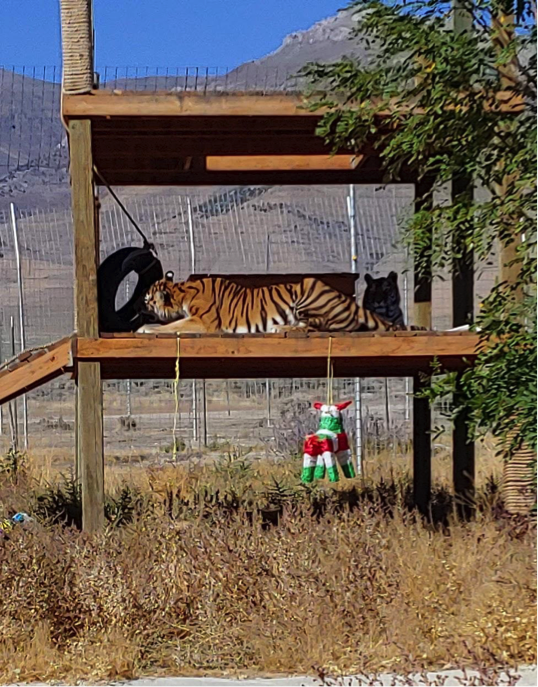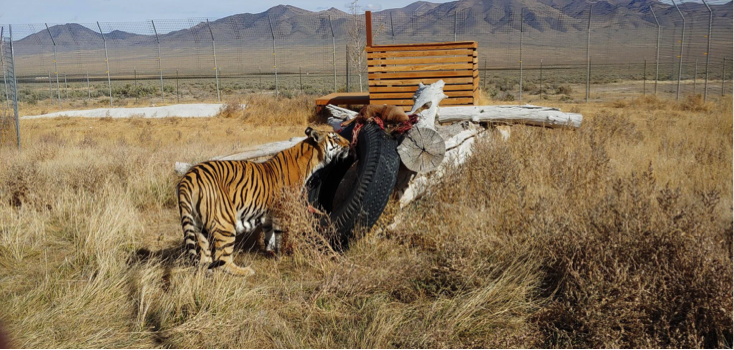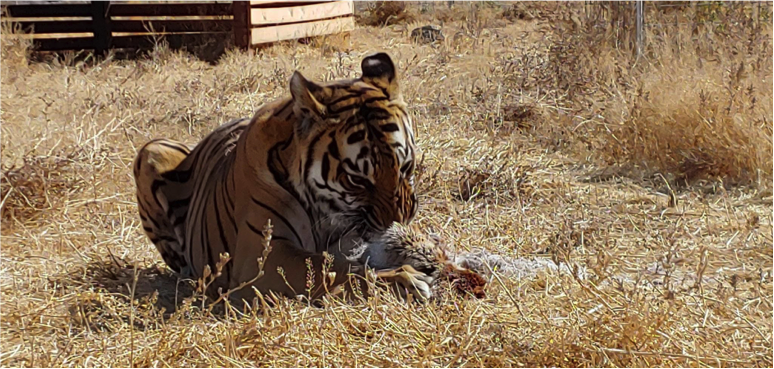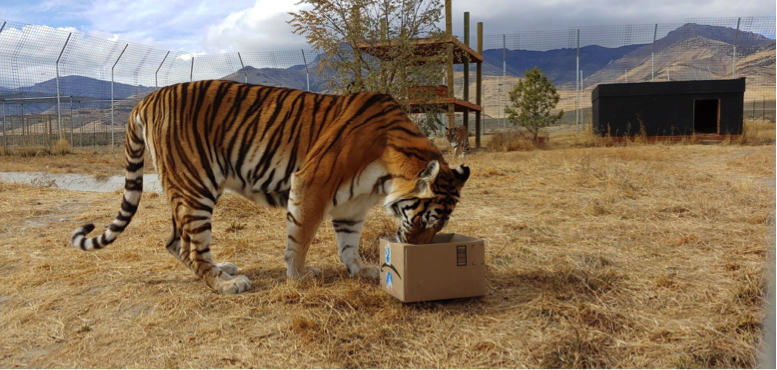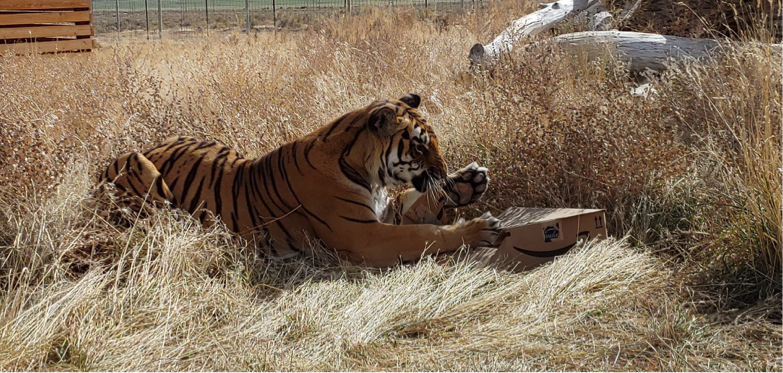Emily Borowski's Work Stories: All Creatures
Welcome to the newest post in the second annual series of guest posts on the subject of our everyday work lives. For the remaining weeks of Ordinary Time, I’ve invited some friends to share a one-day snapshot into their work life that will help us see what they know to be true right now about who they are made to be.
Today’s guest grew up in the same small town/large church as our family. I had the privilege of watching Emily grow into the woman, mother, wife, and gamekeeper (!) she is today. Along the way, she graced our congregation with the beauty of dance. I love the way she combines beauty and strength in her everyday, walk-around, worshiping-God-life. May you be encouraged in the same no matter the size of the beast you need to tame today.
At this point in my life, I truly feel as if I get the best of both worlds (Hannah Montana, anyone? No, just me?). I get to pursue a career that I love outside the home half the week, while also being able to be home, raising my son during the other half and I am so very grateful the Lord has chosen to bless me in this way.
To give you some background on how I got into what I do, we’ll need to go back in time a few years. After finishing college, I had yet to decide what I wanted to do with my Bachelor of Science degree in Wildlife Biology. The closer I got to the end of my program, the more I doubted how much I really wanted to be an actual Wildlife Biologist. My dream, originally, was to work in tiger conservation, but the more I learned how difficult is was to become successful in that field, the more I questioned if I really wanted it badly enough to actually “make it” in that line of work. In order to graduate, I needed some field experience, and as I explored all my options I came across some animal keeper internships and my interest was immediately piqued. I applied to one in Texas almost on a whim, never thinking I’d actually be chosen in a million years, and to my surprise, was actually accepted. The work was hard and challenging, but fulfilling and had a way of exercising both my mind and body, which I loved. After that internship, I was fairly certain this was what I wanted to pursue.
It took almost a year after that first internship experience for me to find another one (they are surprisingly competitive), but God really worked in my heart a lot that year while I worked five odd jobs while living with parents again in Upstate NY; I was a dance instructor at a dance studio, a farmhand on a private farm, a staff person on a local political campaign, an intern at the local zoo, and an in-home respite caregiver. They were probably some of the most random jobs you can be working at one time and it definitely kept me busy, but I really enjoyed the diversity and change of pace. Eventually, I found and accepted another animal keeper internship all the way across the country in Nevada. I had never been out West at that point, so that added another level of excitement. Again, I absolutely loved it and at the end of the internship, I was offered a full-time position as an animal caretaker, which of course I happily accepted.
During that time, I got involved with a local church plant and met my future brother-in-law (my pastor) and sister-in-law and through them, though I wouldn’t know it for over two years, my now-husband. Fast forward two years and I felt God calling me to do the World Race (an 11-month mission trip to 11 countries) so I left to do that. Six months after returning from that incredible journey, Jeremy and I were married and moved to Louisville, Kentucky where Jeremy attended Seminary. Exactly a year later, I gave birth to our son- the best anniversary present, ever! A year after that, we felt the Lord calling us back to Nevada and I was offered my old job back at Safe Haven Wildlife Sanctuary. Wanting to still be home with my young son but excited at the prospect of again working a job that I loved, I accepted in a part-time capacity. That was almost a year ago, which brings us to today.
Emily’s son, Luka, trying to hide when it’s time to get ready to leave for work.
My alarm typically goes off at 6 AM on a workday so I have enough time to get myself ready, drop my son off at a friends house for the day (we have two different families who graciously watch Luka for us on the days I work) and get to work by 7:45. This can sometimes be a challenge when my son chooses to do things like the “let’s be cute and hide instead of changing my poopy diaper” game. This is a picture of him doing that. Oh, but I love him so much!
Safe Haven is over 40 miles from the tiny, loveable town we live in and is so “in the middle of nowhere” that there is no cell phone reception for a 15-mile radius. I know that sounds like a nightmare to some people (my husband included- he has me text him when I arrive at work and again when I leave so he knows I’m not stranded with no way to contact anyone), but I absolutely love it. Not only is that the best place for an animal sanctuary, but I get at least 40 minutes to myself twice a day on my commute there and back again (a Hobbit’s Tale). Any moms of young children out there know what I’m talking about. My son seems to have a sixth sense for when I’m out of my bed in the morning because almost anytime I try to get up early to have some quiet time alone when I’m not working, he undoubtedly wakes up, insisting he starts the day with me too. So on my gloriously long 40-minute commute, I will typically listen to audio Bible, pray, listen to podcasts, and sometimes just sit in silence. Those moments alone with God feed my soul and are such a gift, I absolutely relish them. I also get to soak in the beauty Nevada has to offer on my drive. Depending on the time of year, I also get to witness the sunrise. How awesome is it that He chose to make this world so beautiful?
Safe Haven Wildlife Sanctuary is home to 45 animals who have previously been either been born and raised in captivity and owned illegally, abused, or neglected, or, were found injured in the wild and could not be rehabilitated, were taken from the wild with the intention of being kept as a pet or who no longer have a home (for various reasons) and their only other option is euthenasia. It is currently home to six tigers, two African lions, two cougars, two American black bears, four coyotes, three red foxes, one grey fox, six bobcats, three caracals, eight African servals, three macaws, one African grey parrot, two desert tortoises, and two abandoned house cats. We are constantly expanding and taking in new animals as time and money allow. As a true sanctuary, Safe Haven does not buy, breed or sell animals and basically exists as a nursing home of sorts, but for animals. Once the animals come to Safe Haven, they are there to stay for the remainder of their life.
Work starts at 8 AM with opening up the two animal sections at the sanctuary, the small animal area and the large animal area (pictured below).
Opening involves walking around each enclosure, making sure their structural integrity is still intact, checking that the hotwires are still working, visually examining each animal and taking note of anything amiss with them (any cuts, limps, do they seem lethargic, etc), feeding medication to some of the animals, turning off the heat lamps in the African animal dens (they get turned on if the nighttime temperature dips below 40 degrees Fahrenheit) and unlocking all the gates. Immediately following opening, we get a rundown of plans for the day, who’s responsible for which section that day, who’s giving tours, what projects we need to work on, etc. and then it’s onto morning animal care, which mostly involves feeding and cleaning.
The felines get a diet of raw beef and chicken, most of which are donated from Walmart, which is in a nation-wide program where they give about-to-expire or just expired meat to animal sanctuaries across the country. As you can imagine, this cuts costs significantly. As a private non-profit organization, we raise our own funds so this is a huge help in keeping the sanctuary running. The donated meat is supplemented with purchased beef heart and a specially formulated meat called triple-A, which is comprised of ground beef and horse meat and is mixed with other essential vitamins and minerals. Some of the older cats get additional medication with their food, according to their individual needs.
An American Black Bear diet.
Two tiger diets.
A few of the residents insist on being fed with tongs (they’re not spoiled or anything…)
Tiger sisters Carli and Lily in their lockouts.
As a no-contact facility, we shift and lock the animals into a separate section whenever we go into their enclosures to clean. These are called shift areas or lockouts. We train the animals to shift with food- they know they will be rewarded for shifting so it’s never a problem with the food-motivated animals.
For the few who are not food motivated, however, it can be a bit trickier to get them to shift. Sometimes it takes a little trial and error to figure out what will entice an animal to shift if they won’t do it for food, but there is usually something that will work. For example, one of our tigers LOVES to “paint.” All we have to do is bring out a bottle of our nontoxic children’s paint and he practically jumps into his lockout.
View from den entrance.
For the large animal enclosures, we always go in with at least two people for safety reasons. It never hurts to have an extra pair of eyes to check that locks are actually locked and make sure nothing is left behind in the enclosure that shouldn’t have been. In addition to picking up poop, while cleaning an enclosure we check the dens to see if they have urinated (a common thing among older or lazy animals) and clean that out if so, replacing it with new cat litter and straw.
We also leave behind some sort of enrichment for the animals to encounter once we let them back into the main part of their enclosure. Enrichment is anything that stimulates at least one of the animal’s senses and is important for brain development, cognitive function, and helps prevent boredom- which can cause a whole host of problems, including self-harm if left unaddressed. We try to rotate which sense we are trying to stimulate because if the animals were to encounter the same type of enrichment all the time it would be, needless to say, less enriching. Some examples of enrichment include new toys or one swapped from another animal enclosure, a type of scent such as an essential oil or perfume, bones from fresh deer carcasses donated by hunters, food hidden around the enclosure or on a box, etc.
African serval, Goya, and Caracal, Hantara, fighting over a paper bag I had taken out of one of the fox enclosures. It had been marked by the foxes at least a few times, which just added to the allure.
Sometimes it turns into an enrichment of sorts for us. One of the caretakers put this boomer ball (a virtually indestructible ball made specifically for big cats) on top of this five-ton tire, not realizing it would fit perfectly inside, so much so, there wasn’t enough room for us to get even a stick down far enough to pry it out. We ended up having to use two giant 30-pound crowbars to lift the tire enough to pop the ball back out. Embarrassingly, it took us almost an hour from start to finish.
We also dump and clean each water bowl during morning animal care. They are disinfected twice a week during the summer and sometimes have to be dumped throughout the day on the hotter summer days because the water will get so hot the animals won’t drink it. The birds also like to use them as their personal birdbaths, which makes them extra gross. The big cats tend to think the water bowls are toys if they are loose inside the enclosures, we learned this the hard way. Needless to say, they all have their own personal cages around them so the animals can’t take them away and we are able to change them safely from outside the enclosure. However, this still doesn’t keep some of the tigers from playing around their water bowls.
In the winter, of course, we have the opposite temperature problem and sometimes have to go out every 30 minutes just to break the ice. The high desert definitely has some crazy temperature extremes. Just one of those things that keeps it exciting.
After morning animal care, we work on washing dishes and completing any other extra projects we have for the day. Twice a week, we pick up meat donated from Walmart, which requires that we sort through everything that comes in so we can toss anything we can’t use and move the good stuff into our meat freezers. We transport the meat in 80-gallon trash bins which need to be thoroughly disinfected after each meat sort. They can get pretty gross.
In the past few weeks, we have been working on winterizing the sanctuary. This involves pulling and trimming weeds and grass in the enclosures so that the grass will be able to grow back next year. If you’ve ever encountered a tumbleweed, you know just how unpleasant they are.
Essentially, they are a bush of thorns that break off and feel like a bee sting if they undoubtedly find a way to embed themselves into your skin; it’s definitely not one of the more pleasant jobs. This was a pile we accumulated from just one of the enclosures. We had to squish them down in a pickup truck to drive to the dump to be burned and they were so compacted it kept its shape after I had put down the tailgate to get them all out, which took way longer than I thought it would. It took three truckloads to get all of these weeds out.
An hour from closing time, we start closing each animal section by checking that all locks are locked, waters are full, animals are looking well and heats are turned on if needed. We also pull meat from our freezers to thaw out overnight so it’s ready to be prepared in the morning. Right now we go through over 100 pounds of meat a day and it takes over an hour to get all of the diets prepared. Because of this, whoever is scheduled to do food prep goes into work an hour early so that the diets are mostly ready by the time we start opening rounds. The nice thing about coming in early is that you also get to leave early; it’s crazy how much more of the day you feel like you still have with even just an extra hour.
After my 40 minute drive back home, I usually go straight to pick up Luka and start dinner so it’s at least started by the time Jeremy gets home from work. This can be challenging with an almost-two-year-old who almost constantly wants my attention. Luka’s bedtime is generally within an hour of finishing dinner and by the time we put him down to sleep, I’m usually feeling ready for bed myself. Still, I’m often struck with how blessed I am and how much I really love being a mother, which is more of a surprise to me than anyone. Just a few years ago I didn’t even think I wanted children. Isn’t it crazy how much God can change our hearts, and sometimes in such a short time? I absolutely love my job and find fulfillment in it, and yet, I feel it’s my role as a mother that has given me an even deeper sense of purpose. I hope and pray I handle the responsibility and honor of being a parent well and that I am faithful in stewarding Luka’s heart (and the hearts of any future children, Lord willing) in a way that brings God glory.
Breathtaking crescent moon hovering above the mountains.
Emily Borowski lives in Winnemucca, Nevada with her husband, Jeremy, and almost two-year-old, Luka. She works as a part-time animal caretaker at Safe Haven Wildlife Sanctuary and spends the rest of the week as a stay at home mom. She and her family enjoy exploring the beauty that is Nevada and doing life alongside the community the Lord has brought to them.
Here’s a benediction and song for all of us, and especially those who work in the nonprofit sector.
“Leader: “In the beginning God created the heavens and the earth.” Creator God, you formed our universe from a shapeless void; You fashioned the planets and forged the stars; You established the seasons and determined life’s rightful order:
All: Creator God, we worship you!
Leader: Word of Life, you spoke over your creation and made it live; You painted nature into beautiful colour; You stirred seas and rivers to song; You called forth creatures of every shape and size:
All: Word of Life, we respond to you!
Leader: Spirit of Life, you gathered the dust of the earth and made a man and a woman; You breathed life into them, that they might know you; You filled your earth with tribes and nations; You entrusted your precious world to us your family:
All: Spirit of Life, we receive you!
Leader: “God saw all that he had made, and it was very good.”
All: Almighty God, today we celebrate the good gift of your creation; Father, Son and Holy Spirit, today we rejoice in the gift of relationship with you. Amen.”
What story does your daily work tell about who you are called to be in this world right now?
Share with me know in the comments below!
(You can read all of the Work Stories here.)

